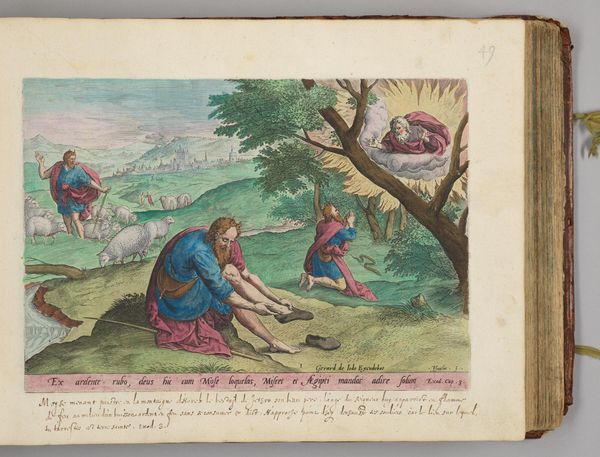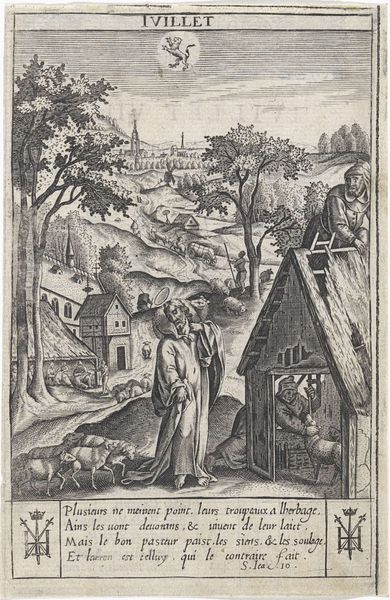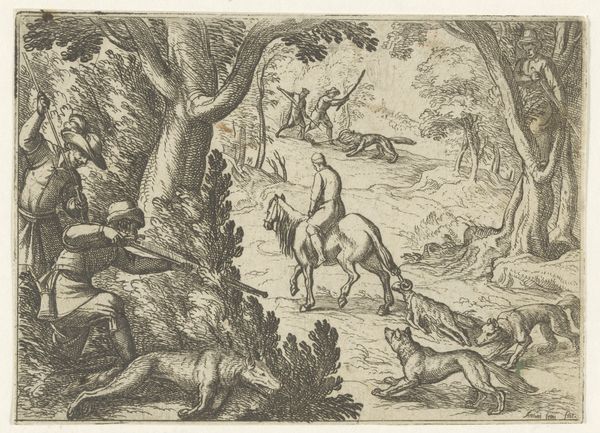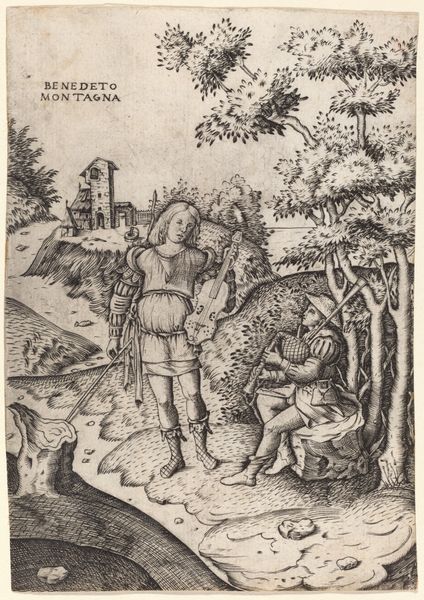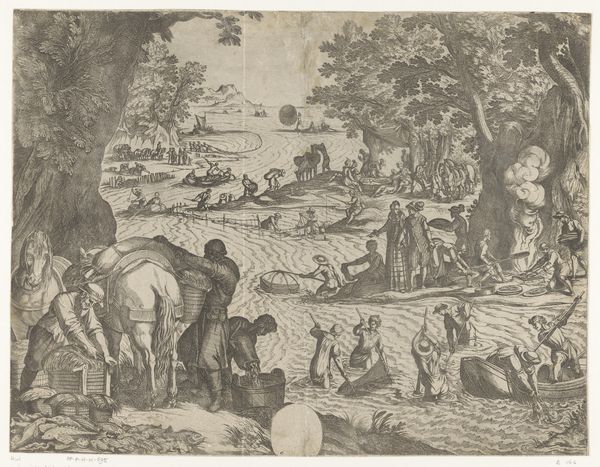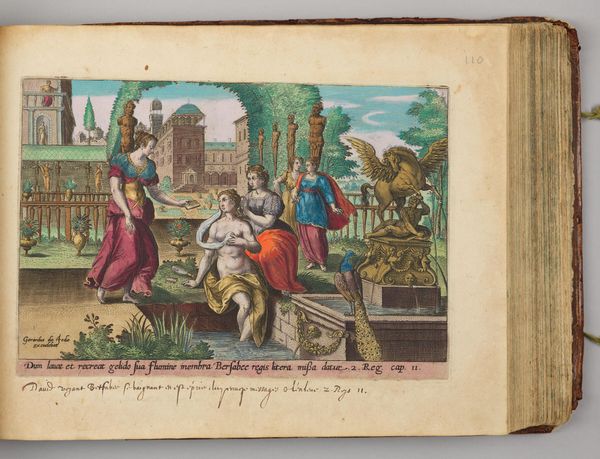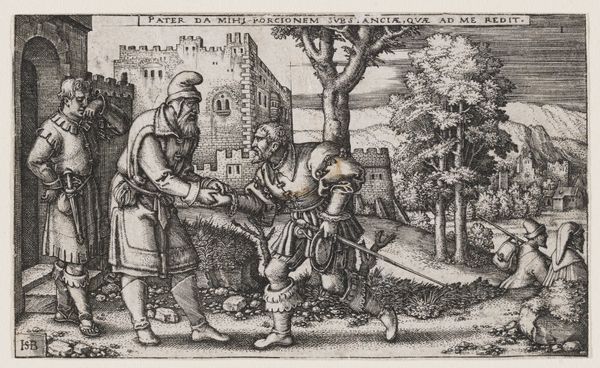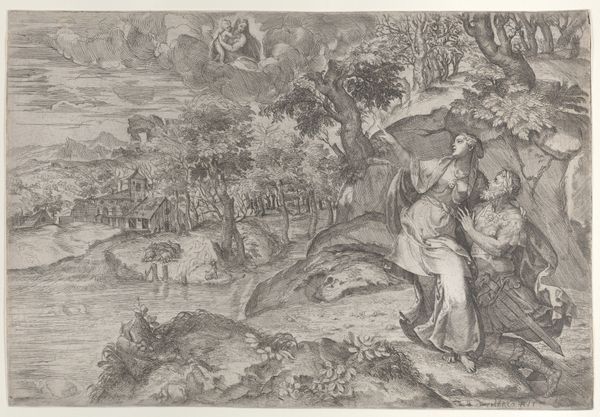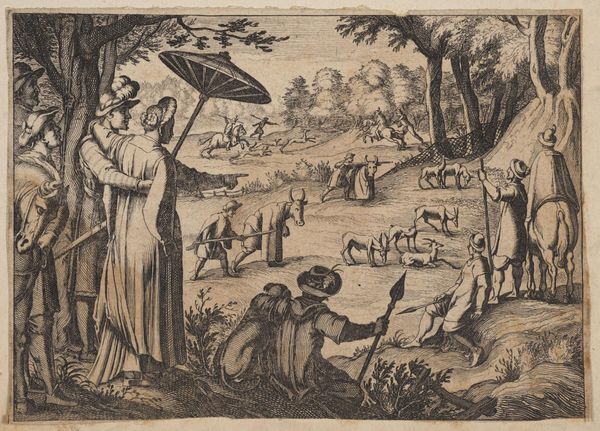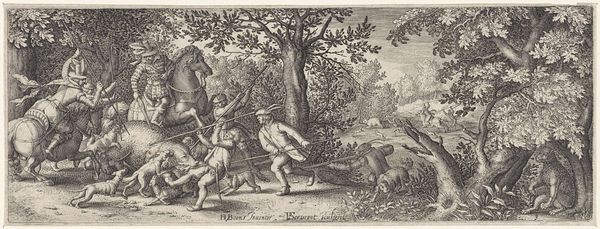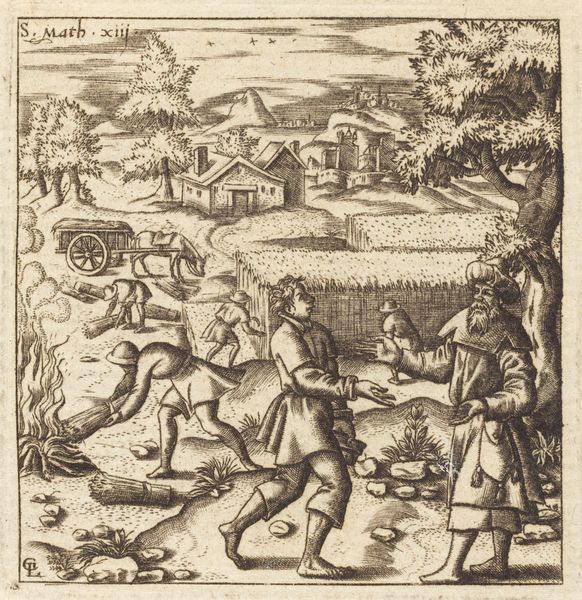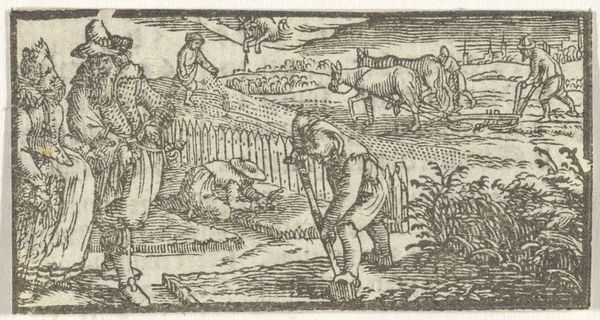
print, engraving
# print
#
landscape
#
figuration
#
coloured pencil
#
genre-painting
#
northern-renaissance
#
engraving
Dimensions: height 93 mm, width 110 mm
Copyright: Rijks Museum: Open Domain
Editor: So, we’re looking at "Fabel van de vogelaar," or "Fable of the Bird Catcher," by Marcus Gheeraerts I, an engraving from 1567, currently held at the Rijksmuseum. It's really detailed! All those little birds… What strikes me most is the clear depiction of labour; the tools laid out, the capture of the birds. How would you interpret this work? Curator: Well, looking at the *process* is key. This isn’t just about a pastoral scene. It's about the *making* of a living, the trapping itself. Consider the social context: bird catching was both a common means of sustenance and a controlled trade. So how does Gheeraerts highlight that? Editor: I see the nets, the cage – functional items clearly represented. Curator: Exactly! They become central. How the nets were crafted, where the wire for the cage came from, and for whom those captured birds were ultimately intended – that is the story being subtly told here. Were they destined for a wealthy table or the market? Was bird catching simply a means to survive? What does the depiction of the trapper’s garb suggest? These material conditions dictated life in 1567. Editor: I see what you mean. It is not idealized. There is almost a commentary about human impact on nature, laid out so plainly with the materials and process shown front and center. Curator: Precisely. The print’s value is as an indicator, showing how early modern existence required interacting materially with one’s environment. Even a print serves as commodity, don’t you think? This “fable” invites us to contemplate material dependencies between humans and our ecosystem. Editor: Thinking about the materials makes me consider how those practices impacted culture at the time. It makes it much more than a quaint landscape. Curator: Indeed. The value isn’t solely aesthetic. Instead, it stems from its raw representation of life and how Northern Renaissance society was constructed by it.
Comments
No comments
Be the first to comment and join the conversation on the ultimate creative platform.
